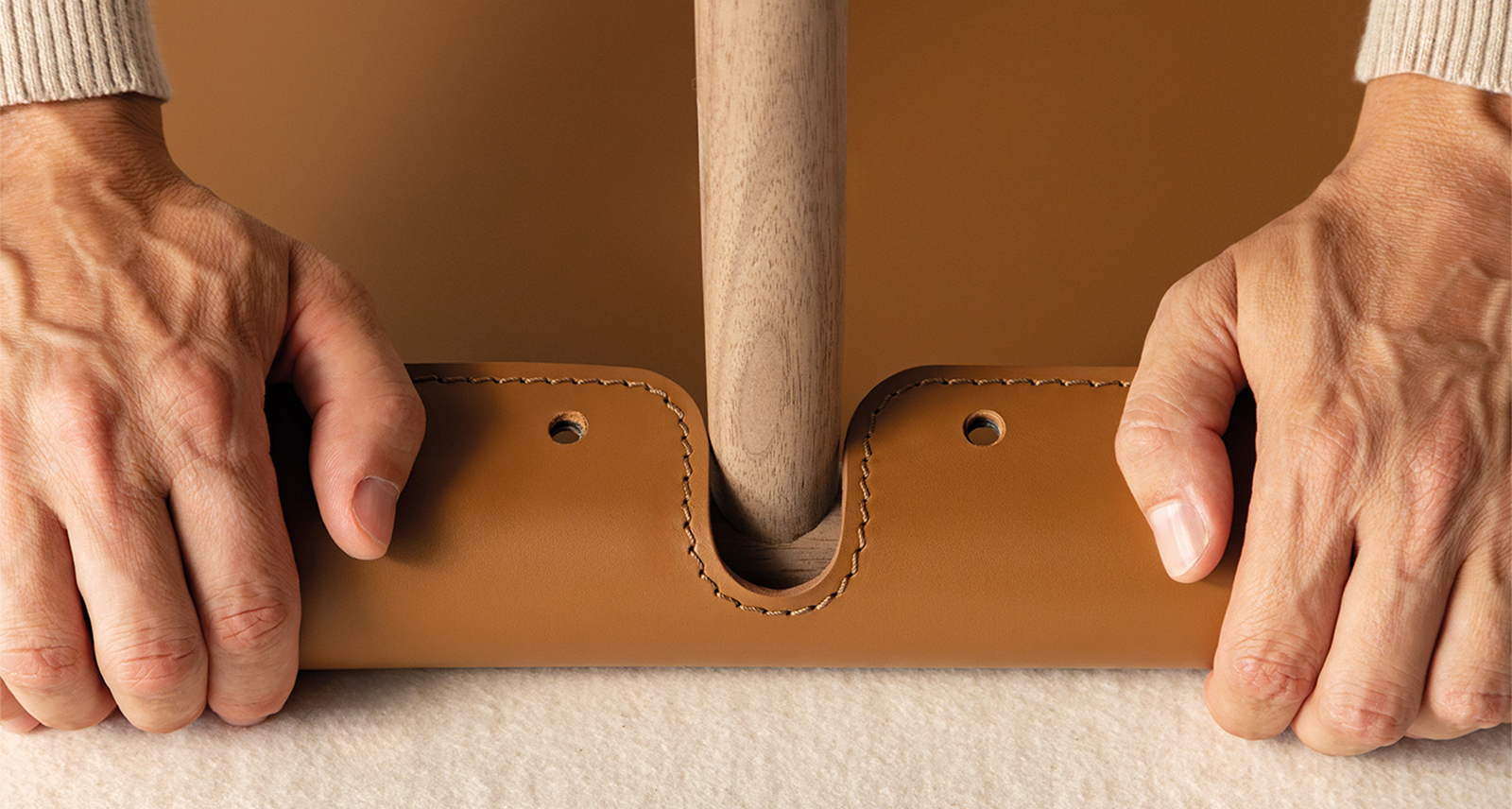Call of the Wild: A Week-Long Trek Through Central Kenya
Spotting a leopard in the wild is rare. Spotting two leopards at once? Exceptional. But catching two of the nocturnal cats in the act of making a third? Without the aid of night-vision goggles, a thermos of coffee and the patience of an acacia tree? It’s a moment you get almost exclusively from the Discovery Channel. And yet, I’m having it within 20 minutes of landing at an isolated airstrip in Kenya’s savannah, without so much as binoculars.
The action is close enough to see clearly out of the extendable roof of a dusty Land Rover. “You can spend a whole week and not see a leopard,” says Jimmy Tinker, the modern Maasai tribesman employed by the most high-end safari camps to steer game drives. He speaks gently, which sometimes makes him hard to hear over the jingling medallions on his kikoi, a traditional plaid wrap. But after the male leopard chases his mate down the umbrella-shaped acacia, where they were sleeping, and mounts and bites her into submission, all I can hear are the roars of beastly copulation.

They’ll repeat this for up to a week if that’s what it takes to ensure the survival of their species, explains Tinker, who specialized in cheetahs in tourism school. (Yes, really.)
It wasn’t that many generations ago that Maasai warriors hunted leopards. Cheetahs and lions, too. Now they’re protecting them by taking jobs in global tourism. Sometimes it feels exploitative and embarrassing, like when one dances in a Maasai hut shaking a beaded, jingling stick, then gets nudged over to the singing kids covered in flies for an unwanted picture. Other times it feels like the very definition of a beneficial relationship: they give me a profound view of the cradle of humanity, and I provide more value for their land’s wildlife than game hunting ever could.
A few more Rovers jerk through the tire paths to gawk at the big cats, but the swelling audience seems to make them self-conscious. They take their leopard lovemaking behind some shrubs. Tinker shifts into reverse and, without so much as a compass, let alone a GPS, navigates the vast Maasai Mara National Reserve, one of Barack Obama’s favourite hideaways. I’m staying at Kicheche, a boutique camp that takes care of all the meals, all the drinks, and all the drives. But we don’t even get 50 metres in its direction before I feel the unmistakable thumping of a flat tire. Tinker soothingly, always soothingly, asks me and my fellow passengers to exit so he can change the tire — except I seem to recall clear instructions in the glossy brochure advising against ever leaving the vehicle.

The other advice was to wear neutral clothing so as to not attract any of the Big Five — rhinos, elephants, lions, buffalo and, you know, the leopard currently juiced up on testosterone. Instead I’m wearing a freshly pressed, gleaming white shirt on the vast African plains. But note the blast of red off my driver’s tinkling kikoi. I can’t be in too much danger. It’s what the 32-year-old has probably worn most of his life growing up here, until going to college and, ironically, adorning it again as a certified guide for a bush hotel. So I feel safe enough to seize what Kicheche’s flamboyant host, Peter Cadot, a third-generation Kenyan of British descent, calls an “MMBA moment.”
Miles and miles of bloody Africa.
But to get there, I first had to endure miles and miles of bloody traffic.
…
EN ROUTE TO a small Nairobi airport that would take me to the Mara, throngs of cars, from shiny to battered, clogged the freshly paved roads. In the absence of public transit, Isuzu buses, decked out with disco balls and Rick Ross and Vin Diesel murals, transported the urban workforce from suburbs and shanties. The city’s 3.5-million-strong population was swelling to 5 million, as it does every morning, and in between the lurching traffic, men hawked every imaginable good, from padlocks to phone cords to silly Marx Brothers glasses. Billions had been poured into new roads, but the sidewalks were mostly beaten trails overflowing with pedestrians, some running in their casual work clothes and loafers. But whether you run, walk, bike, or drive, a two-hour-commute is pretty standard in the rapidly growing capital.
“The message I was given is, if you don’t conserve what we have, then in the years to come, we won’t have anything.”
All across the cityscape lay signs of urbanization and the upwardly mobile: stylish malls and exorbitantly priced condos. What I didn’t see, though, were signs of panic. Ever since Al-Shabab’s Westgate Mall massacre, the secret’s been out about Kenya’s Islamic extremists. The once-flourishing tourism and gold-standard safari industry have been limping along, but the everyday hustle of Nairobians defied any evidence that a sectarian rupture was occurring.
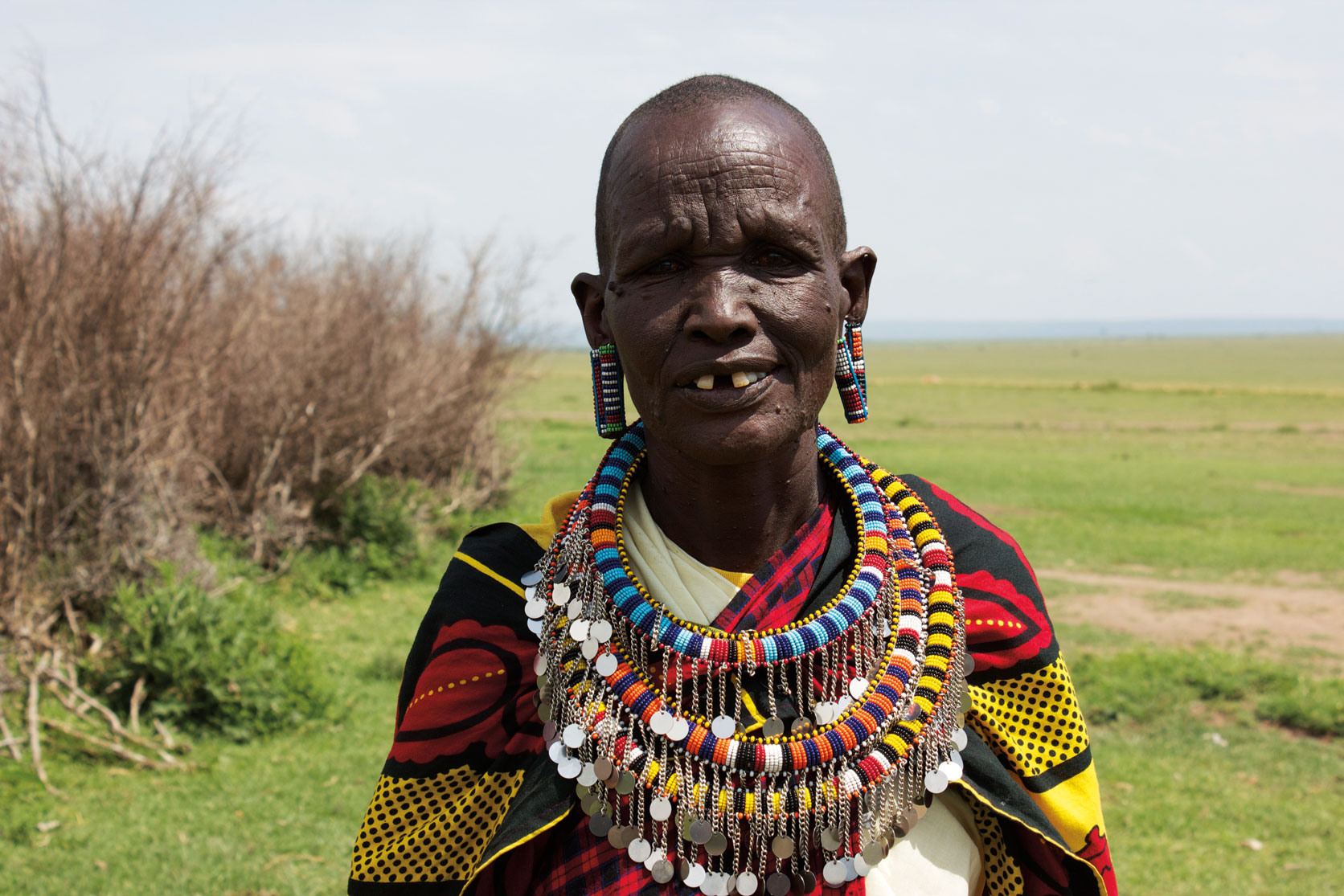
The nation’s already comprised of 40 ethnic groups and 80 languages, including the national tongue, Swahili, from which the word “harambee” originates. Meaning “all pull together,” the concept is as vital now as it was during the 1963 movement that mended ethnic divides in pursuit of sovereignty.
Until independence, Kenya was a favourite colony of the British Empire, traces of which are everywhere, from the left-side drivers to the official English language to Kenya’s preferences for tea time. Coffee, though a major crop, is far more likely to be exported than consumed — or mixed into massage oil for what my Nairobi hotel calls a “Kenyan Express.”
Far from the gruelling traffic, the Hemingways is closer to Karen, a well-to-do suburb. The namesake is Out of Africa author Karen Blixen and, until a generation ago, it was mostly a home for British nationals, but less so now as Kenya’s middle class grows. The Hemingways, though fairly new, is pure English-gentlemen elegance: in the bar, dark leather, marble, and a crackling fireplace; in the suite, standing telescopes, oriental rugs, and a trunk not for storing clothes but a hydraulic television — to protect my view of the lush, wooded ridge of the Great Rift Valley. (The clothes go in the dark wood walk-in closet, just where my villa’s butler would unpack them.) Before leaving Nairobi for the bushes, I went to two vastly different animal attractions within the city. The potential for failure here is high, as anyone disappointed by the sad state of many urban zoos can attest — limited space, lethargic animals. But these aren’t like that at all. The first was the Sheldrick Elephant Orphanage, where I petted and played with the offspring of ivory-poacher victims. The animals kicked around soccer balls and broke my travel-hardened heart by slurping from gigantic milk bottles.
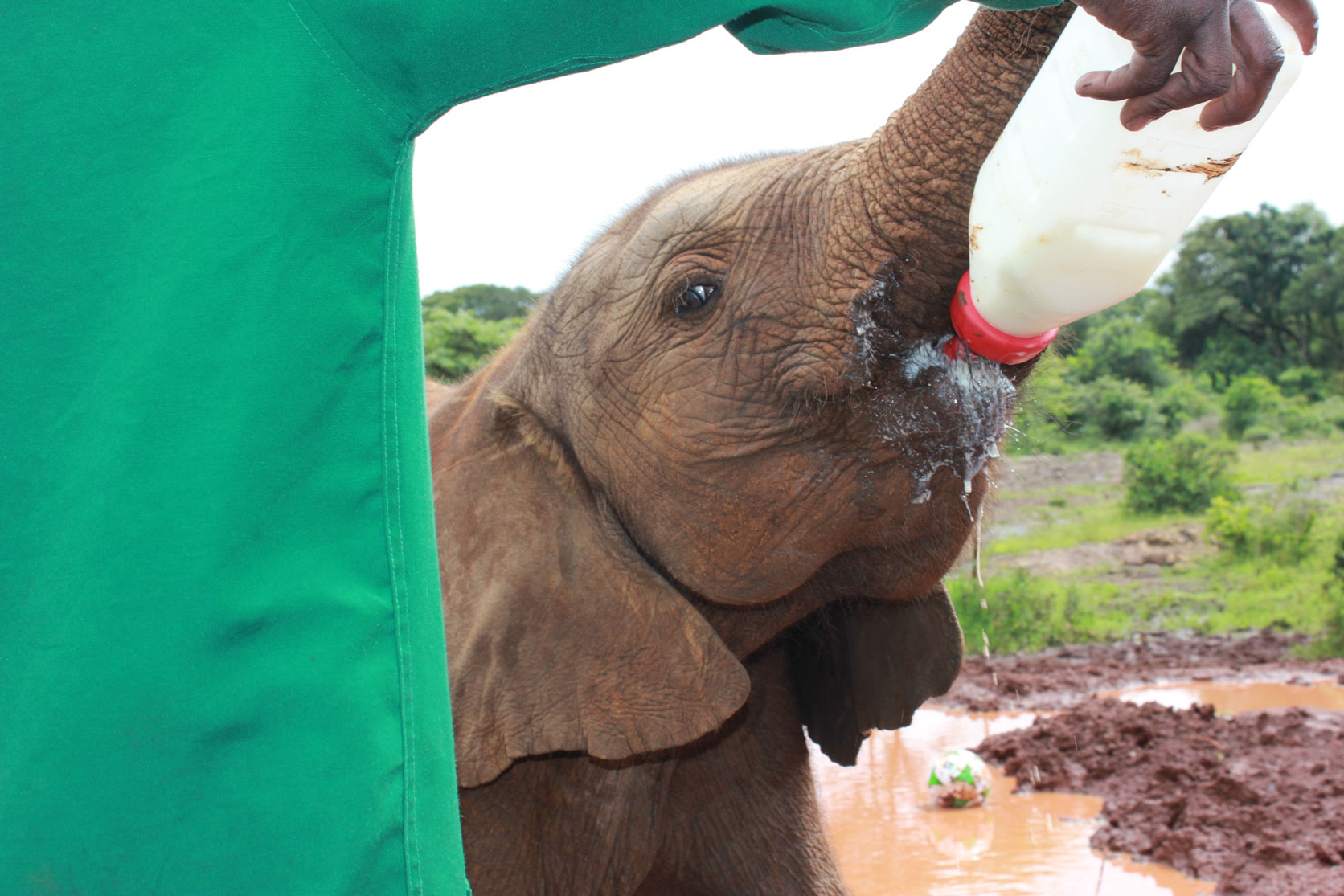
After that, possibly ironically, was dinner at Carnivore, a Brazilian-style rodizio with legendary game-meat options. But the grilled giraffe, buffalo, wildebeest and zebra were long gone, banned in 2004 and replaced with meats no more exotic than crocodile and ox testicles. Perhaps the massive dining room and dance floor were livelier before the ban, but it’s for the best. Having just danced with elephants, there isn’t much that a dance floor, pulsing with sweaty humans, could offer me. Plus, the perfectly charred meats (save for the bitter balls) and two-tier Lazy Susan of wildberry, mint, mango, and more chutneys, were more than satisfying. Carnivore continues to lobby for the reintroduction of safari game, but they’re up against a whole generation of Kenyans who’ve been indoctrinated about animal conservation since independence. They took those values home to their parents to believe in and uphold, the same way Canadian kids in the 1980s spread the gospel of recycling.
Popular opinion here is that far more fortune lies in letting people like me see exotic animals rather than eating (or wearing or decorating with) them.
Popular opinion here is that far more fortune lies in letting people like me see exotic animals rather than eating (or wearing or decorating with) them, but some fear that one too many hits to the safari-heavy tourism sector, which has already hemorrhaged tens of thousands of jobs, could reverse this. Still, Carnivore’s the only place outside of Nairobi’s airports where I sensed higher security over terrorism fears, thanks to a thorough inspection of the car’s underside. Inside, as the “dawa man” muddled sugar, lime and vodka on a wooden tray, I spoke to a tourism professional about Kenya’s own war on terror and was struck by this pious woman’s empathy for the radicalized — poor, underprivileged young men, she called them, enticed to kill to support their families.
…
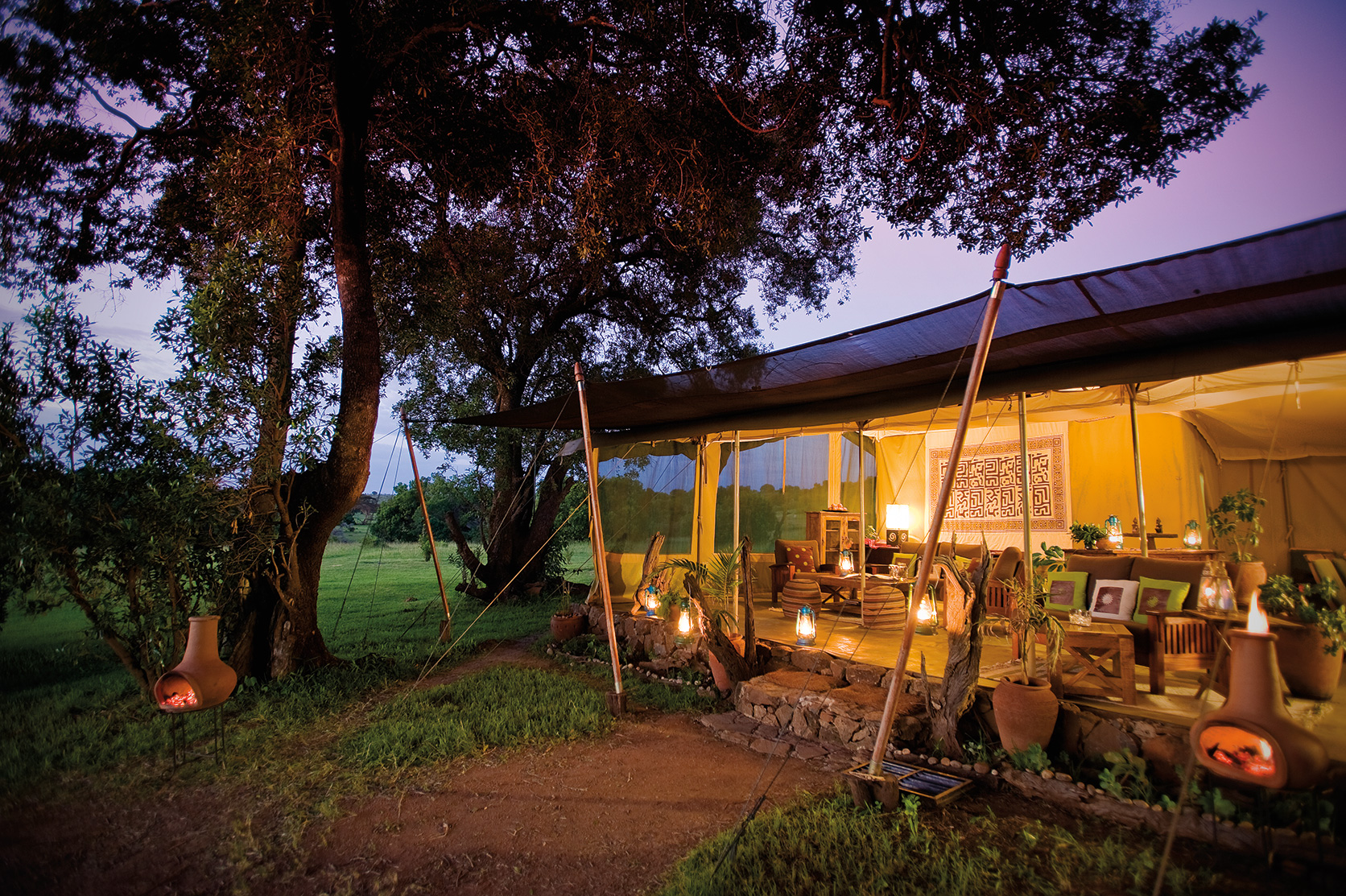
I WANTED TO see central Kenya from the countryside and got a unique angle at the foot of Mount Kenya, 120 km north of Nairobi, where Joma Idros led me through some fierce rapids.
The young man splits his time between the city, where he has a job “burning discs,” and the country, where a nascent adventure-tourism business grows in the form of kayaking, whitewater rafting, and rock climbing.
Getting to the Tana River from outfitter Camp Sagana felt like going to war. The only transport was a military truck that required a ladder to climb into the back of. I held on for dear life as the steel benches rattled over rough terrain. My ass was numb for days, but it was so worth it once I reached the Tana’s waters and tore down 11 of its 500 km. It may be the best way to see rural Kenya. Goats grazed on the banks. Corn, kale and bean farmers left their mud huts and emerged from the groves to collect water. Their children and fisherman gawked at the thick-headed Westerner throwing his life to wicked waters. (Swimming, like drinking coffee, isn’t part of their cultural baggage.) The other guides helping Idros were mostly farm hands (Sagana, too, is a crop farm), and, in the spirit of harambee, there was a lot of pulling each other together, into the raft, as we flipped on the falls.
“If he says ‘run,’ make sure you can run faster than him.”
Later that day, a former farmer, James Mwaniki, explained to me that, like Maasai villagers, many rural Kenyans have come around to welcoming tourists into their world and protecting the very animals known to threaten their livelihood. “When I was a little kid, I used to see wild animals coming to the farm,” Mwaniki, now a conservationist, explained. “My parents would tell me they’re destroying the crops so you have nothing to eat tomorrow.” That changed the moment his school took a field trip to William Holden wildlife sanctuary, where we met.
Founded by its namesake, the ’50s Hollywood heartthrob and reformed big game hunter, the orphanage breeds endangered species, including the region’s last remaining bongos, a beautiful striped African antelope, while providing other vulnerable animals refuge on its 1,200 acres until they’re ready to return to the wild. But for me, the magic was in the animal interactions and Mwaniki posing me like a tree and filling my hands with corn kernels for Sykes’ monkeys, perched on my shoulders, to casually feed from. “The message I was given is, if you don’t conserve what we have, then in the years to come, we won’t have anything.”
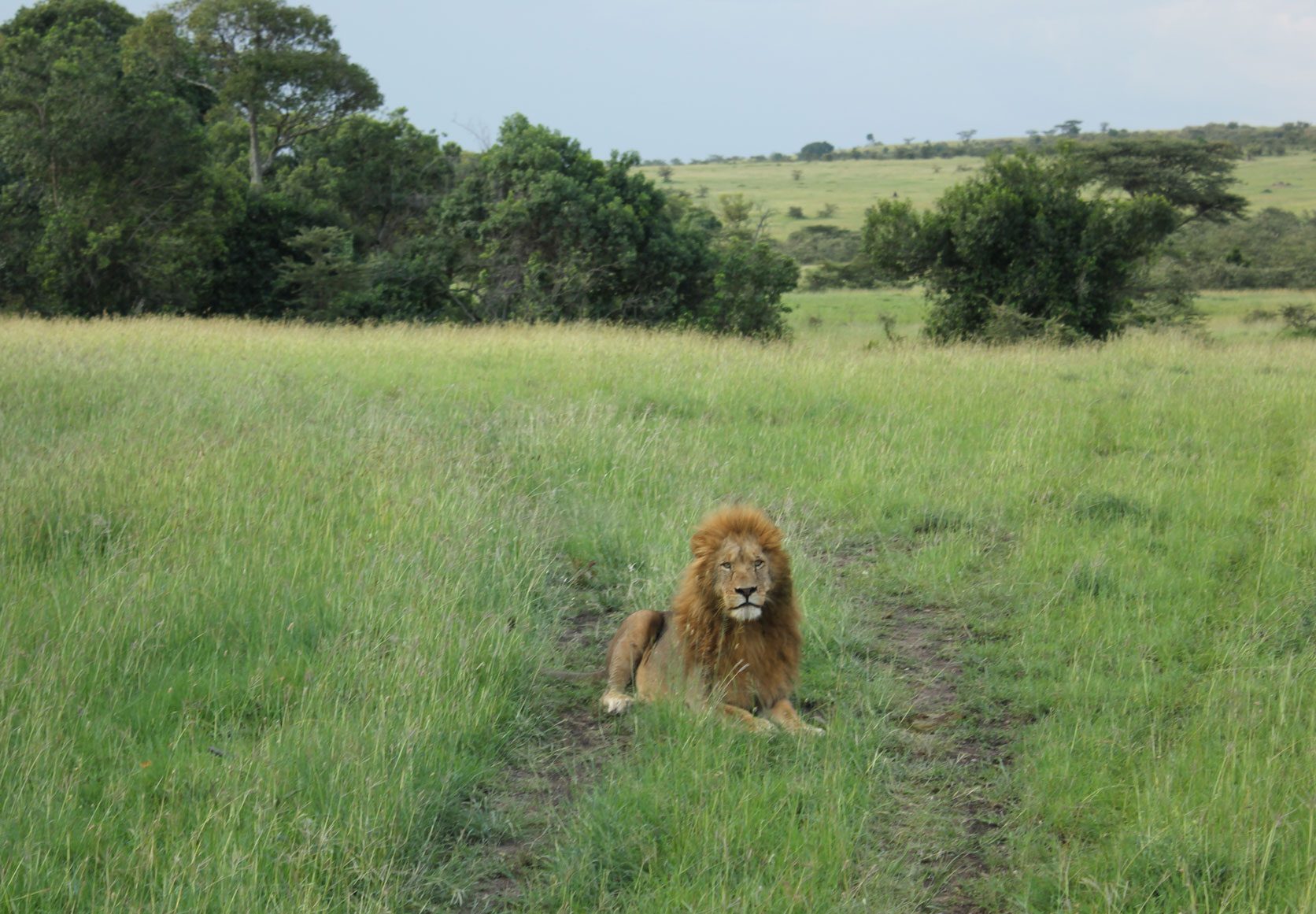
The sanctuary is snug against the Fairmont Mount Kenya Safari Club, where traces from an outmoded perspective exist in the form of taxidermy heads and massive ivory tusks flanking the entrances. Today the elephants are much safer; you can hear them trumpeting softly in the hills, like faraway thank you notes.
On horseback, I trailed into the hills of Mount Kenya National Park, passing a nine-hole course where golfers drive from the northern hemisphere to the southern (just watch out for baboons). I spotted warthogs, antelopes, zebra and, as “Clipper” and I turned a bushy bend, a man in chef whites. It was Kenyan-American Kibett Mengech, who recently joined the hotel and had surprised us with its famous “bush breakfast” in a grassy enclosure overlooking a valley. He helped me down and seated me at a white table readied with mango champagne mimosas. Mengech, who trained in Philadelphia and San Francisco, recently moved his family to the country of his childhood. He’s introduced a credo of organic ingredients, like smoked trout and vegetables so local they’re off the hotel garden. “The harvest is weekly, daily,” he said. “The season is year-round on the equator.”
Not far away were wild buffalo, and lots of park rangers armed with assault rifles in case one went rogue. But the sound of firearms is unheard at the 56-year-old club now.
…
BACK ON THE Maasai Mara, Cadot and I drink Tusker beer, served at room temperature, as per custom. It’s my last night in Kicheche. A hilltop sundowner with red wine and a parade of two-dozen elephants in the distance seems like an appropriate way to spend it.
The white-haired Cadot and I cling to our beers. “There’s nothing lovelier than sitting around the fire, listening to the wildlife, and staring at the stars,” he says. There was a time, perhaps, when he didn’t feel that way. A reformed hunter, he’s only fired his rifle in self-defence over the last 30 years, including once on a walking safari that got too close to a lioness. Or rather, she got too close to them. “I saw her jump and…” He goes silent. “It was horrible.”
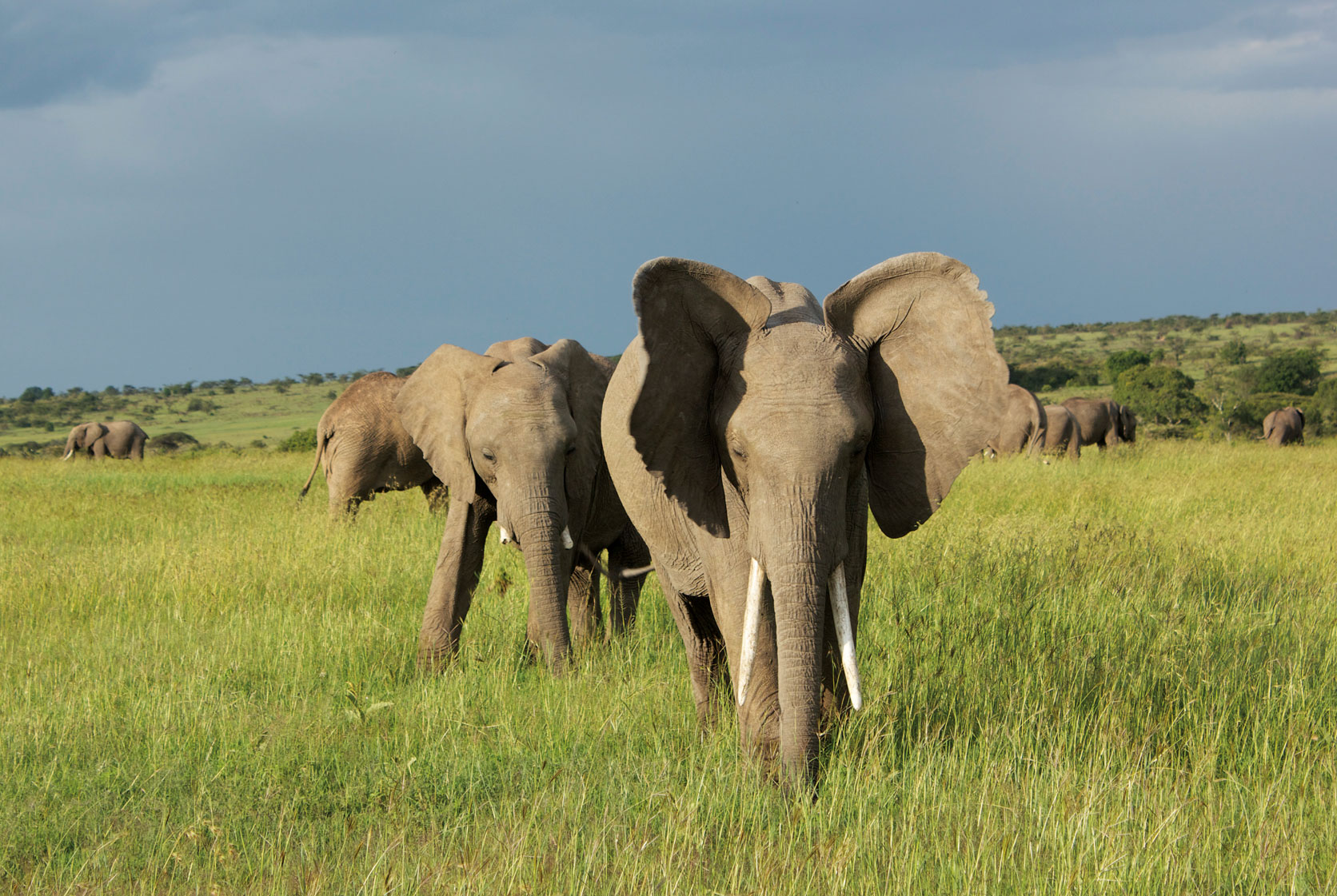
The only guns to be seen are with the camp guards who escort me to my tent at night. “Don’t come in or out of your tent,” says Cadot, handing me the flashlight I should strobe should I need an escort. “He’ll know what’s around.” He smiles. “So if he says ‘run,’ make sure you can run faster than him.”
It’s hard to imagine what I’d need in the middle of the night. The tent is big enough for a plumbed bathroom, two log-framed queen beds with hot water bottles stuffed under the sheets, and the wake-up call is an in-person guard with coffee and biscuits.
The last morning in Kenya is interrupted by summer showers that get the Land Rover’s wheels stuck in a foot deep in the mud. The passengers, Tinker, and I jump into action, wedging boulders under the wheels and pushing ourselves to freedom. What we wore outside the vehicle no longer matters, because there’s mud splattered on all of us. It’s nothing a little harambee can’t fix.









